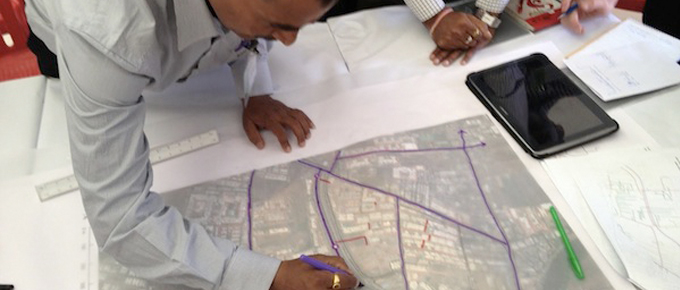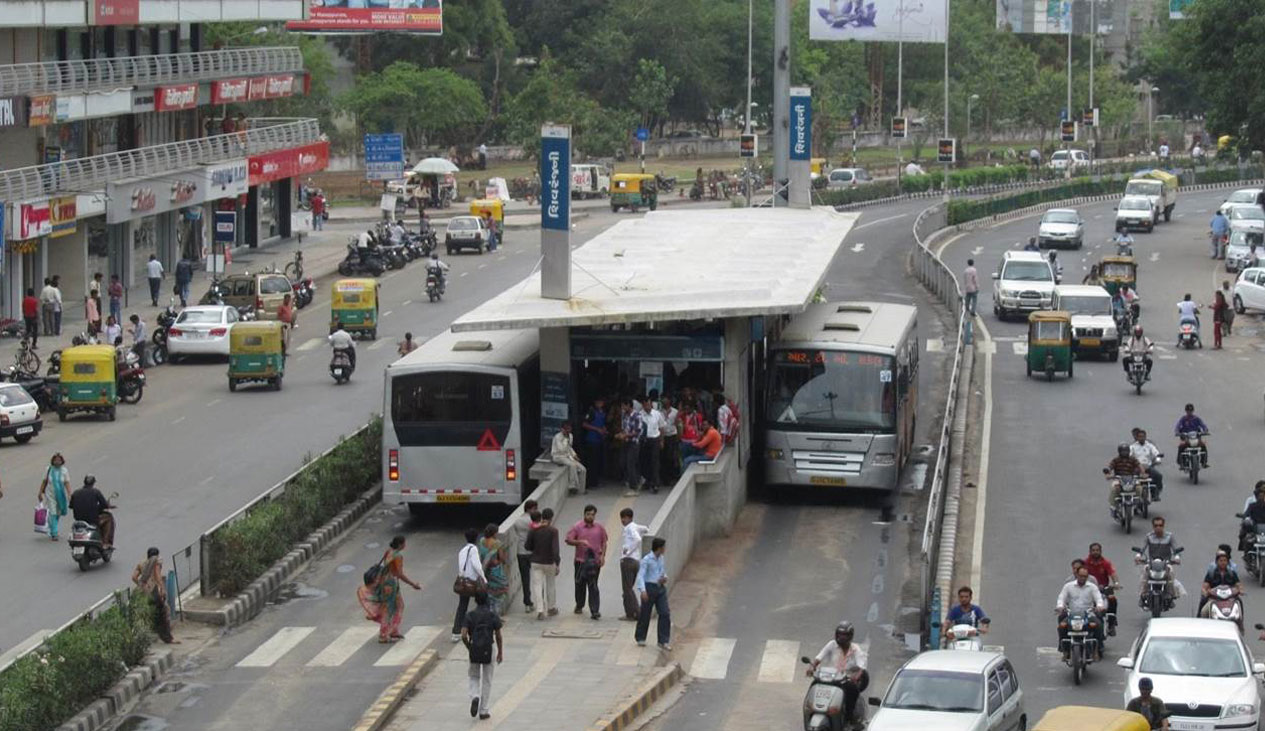by C. Ranga Rohini, ITDP India
With an urbanization rate of over 40 percent in the Indian state of Maharashtra, planning authorities and public transport operators face the increased responsibility of providing efficient transport systems while improving the quality of urban life. Pimpri Chinchwad, one of the state’s fastest growing cities, is set to open the first two corridors of a planned 40 km bus rapid transit (BRT) network in early 2014. To ensure that as many residents as possible can benefit from the BRT, the city has begun exploring mechanisms to achieve greater harmony between land use regulations and the emerging mass rapid transit system.
Officials of the Pimpri Chinchwad Municipal Corporation (PCMC) recognize that there is an urgent need to transform existing urban landscapes from a collection of free-standing structures into a cohesive urban environment centered around high quality public transport. Developing a strong framework to guide future growth is essential to achieving this vision. For this purpose, ITDP partnered with PCMC to orgnaize a one-day workshop on transit-oriented development (TOD). The workshop brought together planners, engineers, and other senior officials with experts from ITDP.
Luc Nadal, ITDP’s Technical Director for Urban Development, presented on the link between urban form and transport mode choices. He emphasized the need to create compact, permeable neighborhoods, citing international examples such as Central Saint Giles Court in London, IJburg in Amsterdam, and Quartier Messana in Paris. Luc also introduced ITDP’s TOD Standard as a tool to assess urban developments located near public transport nodes. For the purpose of the workshop, the ITDP team analysed a 1.2 square kilometre study area centered around three BRT stations in Pimpale Saudagar to identify existing issues and to assess the changes required in the urban fabric to facilitate transit-oriented development.

Pratibha Bhadane, Senior Town Planner, PCMC, presents a proposal to use parking restrictions within 400 m of BRT stations to spur private “parking markets” outside the BRT influence area.
Participants addressed the following topics in three groups:
– Transit-oriented land use planning at the city level. The group explored mechanisms for aligning job density and infrastructure growth along BRT corridors with projected residential growth. The group also discussed the role of off-street parking reforms and affordable housing as means of promoting the use of public transport.
– The street network and the public realm. Group members identified opportunities to prioritize non-motorized and public transport modes, create an interlinked network of public spaces, and finance these projects through street management mechanisms.
– Built form in the private domain and its interface with the public realm. This involved the identification of preferred building typologies and forms that contribute to the public domain as well as institutional mechanisms to enforce these proposals. Viable financial mechanisms were also developed to route revenue from TOD areas to fund infrastructure improvements in the region.

Assessing walkability in Pimple Saudagar: poor street connectivity limits the catchment area of the BRT system. The green area represents the actual 5 minute pedestrian catchment area within the ideal 400 m buffer around three stations.
Participants agreed that denser development should be planned in the 400 m catchment areas along BRT and metro corridors in order to ensure that the majority of the 740,000 new residents expected to move to Pimpri Chinchwad over the next decade can find accommodation within walking distance of a mass rapid transit station. Participants also developed strong proposals for parking policies to reduce use of private motorized vehicles and incentives for inclusive development through the provision of smaller, affordable units on the BRT corridors.
In terms of better connectivity to station areas, they agreed on the need to restrict block sizes and create a dense network of high quality, safe walking and cycling streets lined by vibrant commercial and residential edges. Implications of increased density on physical and social infrastructure need to be assessed. In addition, participants identified a need for better financial analysis of development rights systems. There was also consensus among the participants on the need to consolidate existing rules and validate existing assumptions through a pilot project in the region. The workshop marks a milestone in the land use and transport planning for Pimpri Chinchwad and has paved the way for second round of discussions among private developers, resident welfare associations, and other stakeholders in the region.





